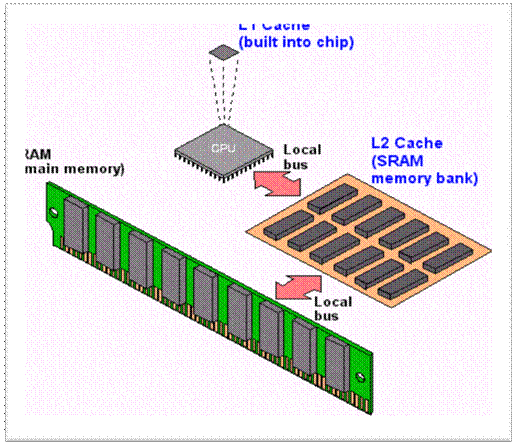

Click OK to close the Settings for Clearing History window. #CACHE MEMORY PICTURES DOWNLOAD#
For more information about other settings, see Delete browsing, search and download history on Firefox.Put a check mark next to Cache and make sure other items you want to keep are not selected. Go to Storage, Storage and Memory or Storage and USB depending on your operating system version.The Settings for Clearing History window will open. Select the check box for Clear history when Firefox closes.In the drop-down menu next to Firefox will, choose Use custom settings for history.It acts as a temporary storage area where computer processors can easily retrieve data and it can act as a buffer between RAM and CPU. It can make the data be retrieved from the computers memory more efficiently. Select the Privacy & Security panel and go to the History section. Cache memory is a chip-based computer component.Click the menu button and select Settings.

L2 or Level 2 Cache: It is the second level of cache memory that may present inside or outside the CPU. L2 cache can be embedded in the CPU, or it can be in a separate. Level 2: Level 2 cache is the secondary cache, which is usually larger than level 1 cache. It is usually embedded as a CPU cache in the processor chip.

The size of this memory ranges from 2KB to 64 KB. The levels of cache memory are as follows: Level 1: Level 1 cache is the primary cache, which is very fast, but relatively small. It is present in a small amount inside every core of the processor separately.
In the Menu bar at the top of the screen, click Firefox and select Preferences. L1 or Level 1 Cache: It is the first level of cache memory that is present inside the processor. You can set Firefox to automatically clear the cache when Firefox closes: Next to Time range to clear, choose Everything from the drop-down menu, select Cache in the items list, make sure other items you want to keep are not selected and then click the OK button. Click History and select Clear Recent History…. Click the menu button to open the menu panel. For example, increasing RAM and/or ROM, utilizing OTP memory, or even adding external memory to the system will help.Tip: Here's another way to clear the Firefox cache: In addition to cache memory, there are other ways to increase the memory of a computer or system. There are three types of cache misses: instruction read misses, data read misses, and data write misses. If there is a failure in reading or writing the data in the cache, it is called a cache miss the CPU will then access the main memory, and this takes longer. If the cache has the information that the CPU needs already loaded onto it, it is called a cache hit. Level 3 (元) cache, or main memory, is larger and slower than L1 and L2 but is still double the speed of RAM. L2 cache, or secondary cache, has more space than L1 cache. If the instructions are not found in L1, Level 2 (L2) is searched. Level 1 (L1) cache, or primary cache, is the smallest and is the first one to be searched by the CPU. The TLB is not directly related to the CPU caches, it is part of the memory management unit (MMU).Ĭomputer cache memory is divided into three levels. The instruction cache that speeds up executable instruction fetch a data cache that speeds up data fetch and store and a translation lookaside buffer (TLB) that is used to speed up virtual-to-physical address translation for executable instructions and data. Most modern server Central Processing Units have three independent caches. It is the fastest memory, but cache memory has a lower capacity than other types of memory. Cache memory stores frequently used data and allows the CPU to access that data from the main memory quicker. 
In order to combat this issue, cache memory, also known as CPU memory or CPU cache, was created. As the speed of the central processing unit (CPU) starts to increase, the gap between the CPU speed and main memory begins to widen and performance comes to a slow. disk cache An instance of cache memory used to store recently read sections of disk file on the grounds that they may well be required again shortly. iFIX provides a picture caching capability that optimizes the performance of the WorkSpace when opening pictures by eliminating the need for picture files. But as some of you may know, that cannot always be the case. In the age of the internet, people are used to being able to surf the web instantaneously.








 0 kommentar(er)
0 kommentar(er)
